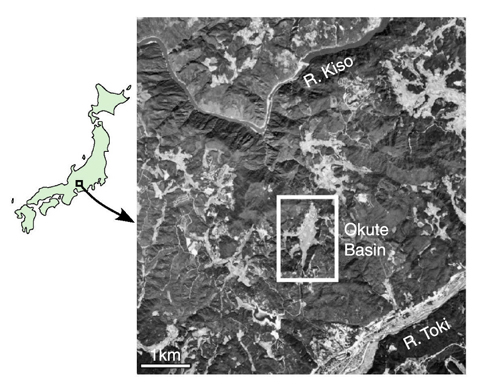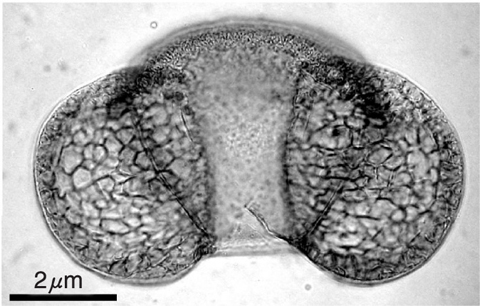
Fig.2-11 Location of the study area (Okute Basin, Mizunami City, Gifu Prefecture)

Fig.2-12 Pollen fossil of Pinus parviflora
Picture by Professor Yoshimune Morita, Okayama University of Science.
Fig.2-13 Pollen composition in the Okute Basin core boring and the past temperature reconstructed by pollen analysis
We have conducted research to develop methods for precise reconstruction of the past climate in an inland area of Japan, as a part of our research into geological disposal of high-level radioactive waste (HLW). As a case study, we investigated the pollen species and their compositional ratios in the stratigraphy of the Okute Basin (Mizunami City, Gifu Prefecture) (Fig.2-11). The pollen (Fig.2-12) preserved in the sediments of the Okute Basin provide an almost continuous record for the past 300,000 years, because the basin is located near the summit of a hilly area and has not been subjected to erosion by large rivers.
Based on the pollen records, the past climate of the Okute Basin has been reconstructed as follows: 300,000 years ago the Okute Basin had a warm climate, with Beech (Fagus) and Alder (Alnus) forests dominant at that time. Subsequently, rapid cooling occurred and mean annual temperature decreased 5 degrees Celsius. Afterwards, repetitive warm and cool periods occurred every few tens of thousands of years. In the cold period, a boreal landscape prevailed in the Tono area, with Tsuga (Tsuga), Firs (Abies), Spruce (Picea) and Pine (Pinus) forests being dominant.
Reconstructed temperatures during the past 300,000 years in the Okute Basin are consistent with global temperature changes reconstructed from analysis of deep-sea sediments. Consequently, climate change in the Okute Basin (Central Japan) is consistent with and therefore linked to global temperature changes (Fig.2-13).
Although paleoclimate changes that occurred during the last several tens of thousands of years were reconstructed in many inland areas in Japan, long-term (>300,000 years), continuous reconstructions have had limited success until now. This research will have a marked impact on paleoclimatology studies and understanding.
As a future research, reconstruction of the past landforms and the geomorphic development is planned to evaluate the effect of climatic changes on landscape morphology.